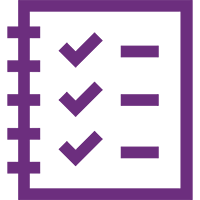We know that diversity, equity and inclusion needs span a vast range: executive coaching for your DEI leaders and DEI allies, coaching others on sensitive topics including DEI issues, and even training for your wider population on how your company approaches diversity, equity and inclusion. We have you covered on all those fronts, and crucially, we have a variety of DEI coaches who can deeply understand the needs and challenges of your employees around these issues.
Our diverse and expert coaches can support the leaders who are grappling with their own experience or those of other DEI employees, provide training in DEI issues for allies and others, or integrate topics of diversity and inclusion into the coaching of employees for whom this is a new conversation.
Challenging coaching calls for those with the compassion and expertise to handle to conversation.

Coaching for DEI Leaders and Allies
Expert, Certified, Diverse Coaches

We coach in the Diversity, Equity and Inclusion Space:
Senior leaders
DEI allies
Group programs that include DEI topics
Workshops on Equity and Inclusion
Keynotes on Ally-ship
Certified, experienced, diverse coaches
Our DEI Coaching Philosophy: Insight + Action = Results
Coach Selection Process
In order to deliver the most value to our clients and their companies, we believe that it’s critical that an executive chooses a coach whose style matches their personality—that’s why we encourage our clients to interview up to three of our coaches to guarantee the best fit.
Diverse, Experienced Coaches
Real Results
Convenience and Flexibility
The Arden Difference
The Power of the Arden Process

Selection
First things first: we set up an initial conversation to help determine the appropriate program for the executive, as well as set up interviews with the three coaches that are the best fit for their needs and goals. In this stage, we are looking to match the executive’s style with that of the coach to create a coaching relationship that delivers maximum results.

Alignment
At the start of each engagement, the coach, the executive, and their supervisor meet to determine the goals of the coaching. Because all of our executive coaching programs are results-driven, it’s critical to set appropriate goals and ensure that the executive, the supervisor, and the company can all realize the benefits of the coaching.

Assessment
When an executive enrolls in a program with the intent to change, measuring the ability and skill level at the outset is a critical first step in setting goals and building a plan to reach them. The coach will select from an array of assessments to select the tools best suited to help the executive gain insight into their unique style and potential areas for growth.

Work the Plan
With feedback from colleagues and a personalized development plan in place, the executive and the coach work through the strategy. They meet regularly to discuss challenges, best practices, and successes, with the coach helping the executive identify and understand their patterns, as well as focus on opportunities for improvement. At the midpoint of the partnership, we once again assess the executive’s progress through a meeting with their supervisor and course-correct, if needed. At the conclusion of the engagement, the executive, supervisor, and coach review the progress and identify any next steps necessary to continue the executive’s growth to ensure a long-term shift in behavior.
Executive Coaching and Leadership Blogs
Leadership Influence: What Sources Are You Using?
by José Morales, MBA, PCC Influence is a cornerstone of effective leadership, shaping how leaders inspire, motivate, and guide others towards a common goal. It’s the subtle yet profound ability to...
3 Lessons from the Best-Rated Companies to Work For in 2024
"Being a great place to work is the difference between being a good company and a great company." – Brian Kristofek, President and CEO, Upshot What makes a “great place to work?” Hint: It’s not...
Cultivating Resilience through Executive and Embodied Presence
by Sandra M. Martínez, Ph.D. PCC Executives and upper management leaders are often advised to cultivate their "executive presence" as a steppingstone to promotions and higher executive roles....
You Get the Results You Train For
by Kevin Ciccotti, CPCC, PCC Life provides us with many lessons if we are paying attention. About 15 years ago I had one such lesson. I was in the process of working toward my coaching credentials,...
The ROI of Trust: How Psychological Safety Creates Thriving Teams
Psychological safety. The term is frequently tossed around but not always fully understood. Coined by Harvard Business School professor Amy Edmondson, psychological safety refers to a shared belief...
Leading by Example: Cultivating Authenticity in the C-Suite
“If you do not lead by example, you cannot expect your team to follow.” ― Sri Amit Ray, Power of Exponential Mindset for Success and Leadership There's the boss who tells everyone else to stay late...
Why We Need a Feedback ‘Hack’. How Our Brains Process Feedback and What We Can Do About It
by Debbie Plager, MS, PCC Some of the most dreaded words in the business vernacular are, “I have some feedback for you.” Whenever I heard the dreaded F word, my pulse started to race. I felt my...
A Closer Look at Our Wide Array of Executive Assessments
Meaningful leadership development starts with a clear understanding of an executive's current strengths and areas for growth. That’s why, at Arden Coaching, we measure our clients’ capabilities at...
Are You a “Challenger” Leader Feeling Misunderstood?
by Roberto Giannicola, PCC Hey there, assertive, decisive, and determined leaders. Do you ever feel like you're operating on a different frequency than everyone else? You drive business to success,...









